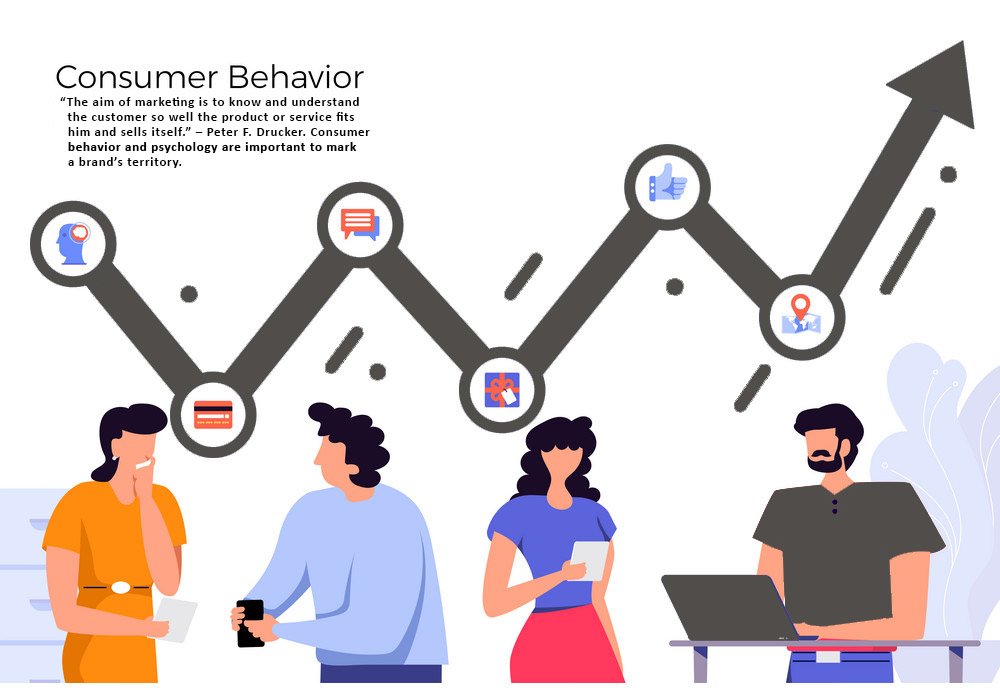Professional Selling And Retail Buying: Understanding Recent Market Trends

Table of Contents
The Rise of Omnichannel Retailing and its Impact on Selling and Buying
The omnichannel approach has fundamentally reshaped the retail experience. No longer are customers confined to a single interaction point; they seamlessly move between online browsing, in-store purchases, mobile app orders, and social media interactions. This demands a holistic strategy impacting both selling and buying.
The Omnichannel Customer Journey: Defining and understanding the customer experience across multiple touchpoints.
- Increased customer expectations for seamless experiences: Customers expect consistent branding, pricing, and service regardless of how they interact with a business. A fragmented experience leads to dissatisfaction and lost sales.
- Need for integrated sales and inventory management systems: Real-time visibility into inventory levels across all channels is crucial for efficient order fulfillment and avoiding stockouts. Integrated systems streamline operations and enhance the customer experience.
- Importance of personalized marketing across channels: Data-driven personalization allows businesses to tailor messaging and offers to individual customers, regardless of the channel they are using.
- Challenges of managing omnichannel operations effectively: Implementing and maintaining an effective omnichannel strategy requires significant investment in technology, training, and process optimization.
Strategies for Effective Omnichannel Selling: Adapting sales techniques to the multi-channel environment.
- Utilizing data analytics to personalize the customer journey: Analyzing customer data to understand preferences and behaviors allows for tailored product recommendations and targeted promotions.
- Training sales teams to navigate different channels effectively: Sales teams need training on how to handle inquiries across various channels, using appropriate communication styles and tools.
- Leveraging social media and digital marketing for lead generation: Social media platforms and targeted digital advertising are vital for reaching and engaging potential customers.
- Integrating online and offline sales channels seamlessly: Customers should be able to easily transition between online and offline channels – for example, browsing online and picking up in-store (BOPIS), or returning an online purchase in a physical store.
Omnichannel Implications for Retail Buying: Sourcing and managing inventory across channels.
- Predictive analytics for inventory management: Utilizing data to forecast demand across different channels helps optimize inventory levels, minimizing stockouts and excess inventory.
- Supply chain optimization to meet demand across channels: A robust and flexible supply chain is crucial for meeting the demands of an omnichannel strategy.
- Negotiating favorable terms with suppliers across multiple channels: Strong relationships with suppliers are essential for securing competitive pricing and reliable delivery across all channels.
- Managing returns and exchanges efficiently across channels: A streamlined returns process is crucial for customer satisfaction and minimizing operational costs.
Data-Driven Decision Making in Professional Selling and Retail Buying
Data is the lifeblood of successful businesses. Leveraging data analytics to inform both selling and buying strategies is no longer optional; it's essential for staying competitive.
Utilizing Sales Data for Improved Performance: Analyzing sales trends and customer behavior to inform strategies.
- CRM systems for tracking customer interactions and sales data: Customer Relationship Management (CRM) systems provide valuable insights into customer behavior, purchase history, and preferences.
- Sales forecasting and demand planning using data analytics: Accurate sales forecasting allows businesses to optimize inventory levels and resource allocation.
- Identifying high-performing products and optimizing inventory levels: Data analysis helps identify best-selling products and inform decisions about inventory levels.
- Measuring the ROI of different selling strategies: Tracking key performance indicators (KPIs) allows businesses to assess the effectiveness of various selling strategies.
Leveraging Market Data for Informed Buying Decisions: Analyzing market trends and consumer preferences to optimize sourcing.
- Market research and competitive analysis: Understanding market trends and competitor activities is crucial for making informed buying decisions.
- Trend forecasting and future demand prediction: Predicting future demand helps businesses anticipate market needs and secure optimal sourcing arrangements.
- Identifying emerging product categories and opportunities: Data analysis can help businesses identify emerging product categories and capitalize on new opportunities.
- Using data to negotiate better prices with suppliers: Data-driven insights can be used to negotiate favorable pricing terms with suppliers.
The Evolving Role of Customer Experience in Professional Selling and Retail Buying
Exceptional customer experience is paramount. It's no longer enough to simply sell a product; businesses must build relationships and provide outstanding service to foster loyalty.
Prioritizing Customer-Centric Strategies in Selling: Building relationships and providing exceptional service.
- Personalization and customization of the customer experience: Tailoring the customer experience to individual preferences fosters loyalty and satisfaction.
- Proactive customer service and support: Anticipating customer needs and providing proactive support builds trust and enhances the customer experience.
- Building loyalty programs and rewards systems: Incentivizing repeat purchases through loyalty programs strengthens customer relationships.
- Collecting customer feedback and using it to improve service: Actively soliciting and responding to customer feedback helps businesses improve their offerings and service.
Customer-Focused Approaches in Retail Buying: Sourcing products that meet customer needs and expectations.
- Understanding customer preferences and demographics: Retail buyers must have a deep understanding of their target audience to source products that meet their needs.
- Sourcing ethically and sustainably produced goods: Increasingly, customers are demanding ethically and sustainably sourced products.
- Ensuring product quality and safety: Maintaining high product quality and safety standards is crucial for building trust and avoiding negative publicity.
- Providing transparent and accurate product information: Customers value transparency and accuracy in product descriptions and information.
Navigating Supply Chain Disruptions and Global Market Volatility
The global landscape is volatile. Supply chain disruptions and market fluctuations are the new normal. Businesses must adapt to these challenges to ensure continuity.
Strategies for Resilient Supply Chains: Mitigating risks and ensuring supply chain continuity.
- Diversifying sourcing strategies and suppliers: Reducing reliance on a single supplier helps mitigate risks associated with disruptions.
- Building strong relationships with key suppliers: Close relationships with suppliers improve communication and collaboration during disruptions.
- Implementing inventory management strategies to buffer against disruptions: Holding appropriate safety stock helps buffer against unexpected supply chain issues.
- Utilizing technology to improve supply chain visibility: Technology can provide real-time visibility into supply chain operations, allowing businesses to proactively address potential issues.
Adapting Sales and Buying Strategies to Market Volatility: Responding to changing market conditions and consumer behavior.
- Monitoring market trends and economic indicators: Staying informed about market trends allows businesses to adapt their strategies accordingly.
- Developing flexible sales and buying strategies: Agility is key to responding to changing market conditions.
- Managing pricing and promotions effectively: Strategic pricing and promotions can help businesses navigate market fluctuations.
- Communicating effectively with customers and suppliers during periods of uncertainty: Open and transparent communication is crucial during periods of uncertainty.
Conclusion: Key Takeaways and Call to Action
Successfully navigating the modern retail landscape requires a multifaceted approach. Integrating data-driven decision making, embracing omnichannel strategies, and prioritizing customer experience are crucial for success in professional selling and retail buying. Adapting to supply chain disruptions and market volatility is equally important. By implementing these strategies, businesses can build resilience, enhance their customer relationships, and achieve sustainable growth. Stay informed about the latest trends in professional selling and retail buying by subscribing to our newsletter or contacting our experts today!

Featured Posts
-
 Mntda Abwzby Llabtkar Fy Mjal Tb Alhyat Alshyt Almdydt Tqnyat Tbyt Mtqdmt
Apr 28, 2025
Mntda Abwzby Llabtkar Fy Mjal Tb Alhyat Alshyt Almdydt Tqnyat Tbyt Mtqdmt
Apr 28, 2025 -
 Latest U S Iran Nuclear Negotiations End Without Breakthrough
Apr 28, 2025
Latest U S Iran Nuclear Negotiations End Without Breakthrough
Apr 28, 2025 -
 The Countrys New Business Hot Spots A Geographic Analysis
Apr 28, 2025
The Countrys New Business Hot Spots A Geographic Analysis
Apr 28, 2025 -
 Are You In A Silent Divorce Understanding The Unseen Warning Signals
Apr 28, 2025
Are You In A Silent Divorce Understanding The Unseen Warning Signals
Apr 28, 2025 -
 Yankees Crush Pirates 12 3 Max Fried Makes Successful Debut
Apr 28, 2025
Yankees Crush Pirates 12 3 Max Fried Makes Successful Debut
Apr 28, 2025
